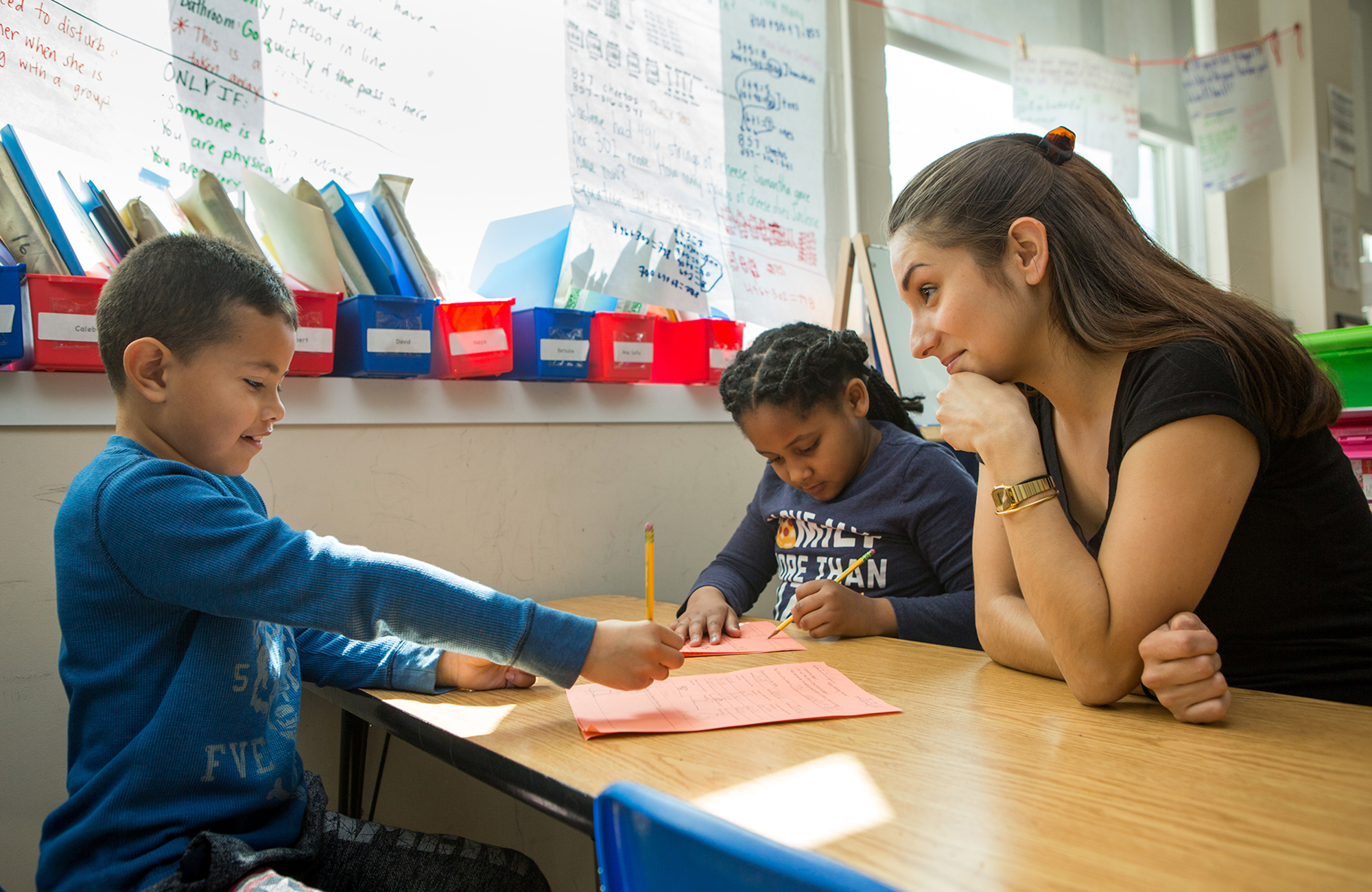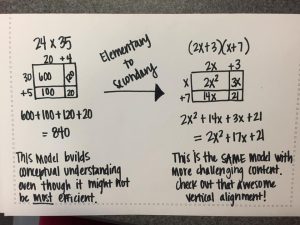Idaho teacher shares her love for Common Core math on Facebook

“Dang I love Common Core!” junior high school math teacher Meg Rowe shared in a post on Facebook that has gone viral.
Talking about the ease of working with her students on polynomials because they had already learned the basic principals in previous grades, Rowe wrote:
“We whipped through this in a day because they were able to conceptually understand the idea of splitting the area of a rectangle into easier to compute pieces, and then finding the sum of the pieces. Is this method the most efficient for multiplying simple two digit numbers? Probably not. But is there a PURPOSE for exposing students to this kind of thinking early on? Totally! … I just love seeing Common Core working!”
Click to see her full post and share with your friends on Facebook!
The internet is full of posts from parents who don’t quite understand what is happening in their child’s classroom. Often, complaints about Common Core result from a lack of familiarity with different methods being used today than in the past. But lots of these methods weren’t created by the Common Core, they are just methods experts agree are strong approaches to get kids to truly understand math concepts, rather than just memorizing rules.
About the Collaborative for Student Success
At our core, we believe leaders at all levels have a role to play in ensuring success for K-12 students. From ensuring schools and teachers are equipped with the best materials to spotlighting the innovative and bold ways federal recovery dollars are being used to drive needed changes, the Collaborative for Student Success aims to inform and amplify policies making a difference for students and families.
To recover from the most disruptive event in the history of American public schools, states and districts are leveraging unprecedented resources to make sure classrooms are safe for learning, providing students and teachers with the high-quality instructional materials they deserve, and are rethinking how best to measure learning so supports are targeted where they’re needed most.


